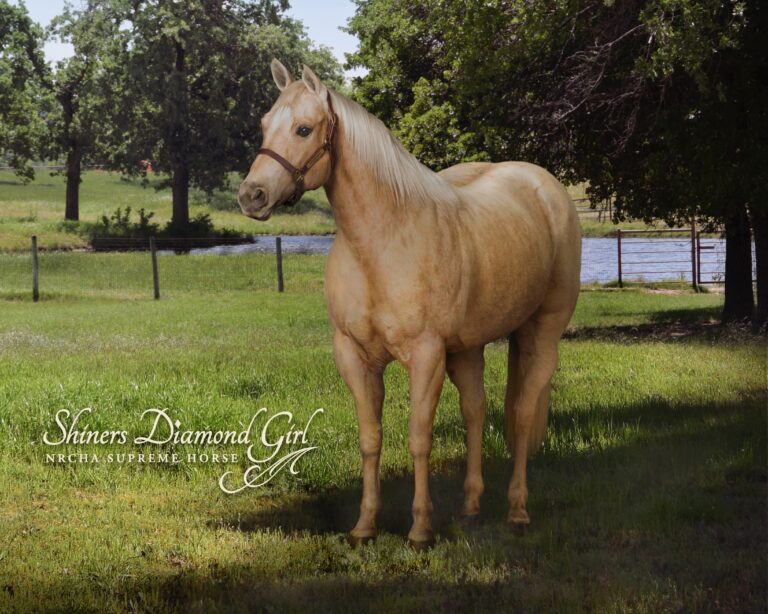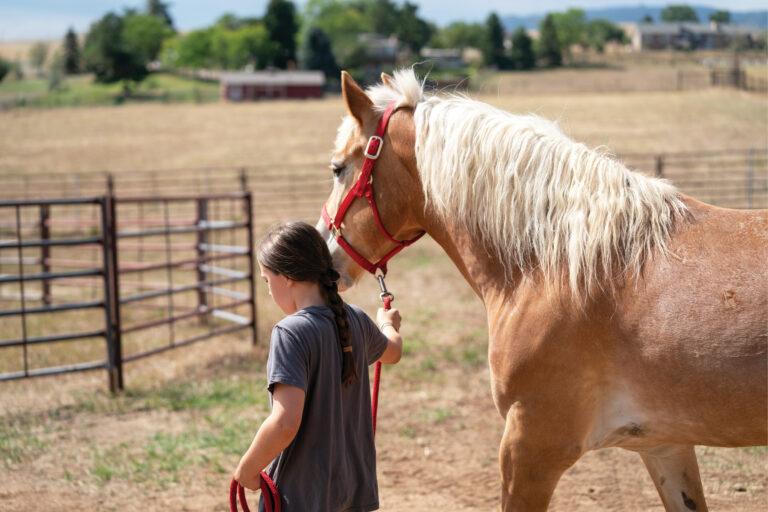Consider my mare, Saddie. She entered my life as a scrawny, flighty yearling, parentage unknown. I was 8 at the time, from a family of modest means that knew nothing about horses. Saddie and I did that thing they say you’re not supposed to do: We grew up together, and learned together.
I started her under saddle and finished her training myself; she never went to a professional. Our competitive experience centered on 4-H, but eventually my love for her and my pride in our accomplishments inspired me to set our sights higher than that.
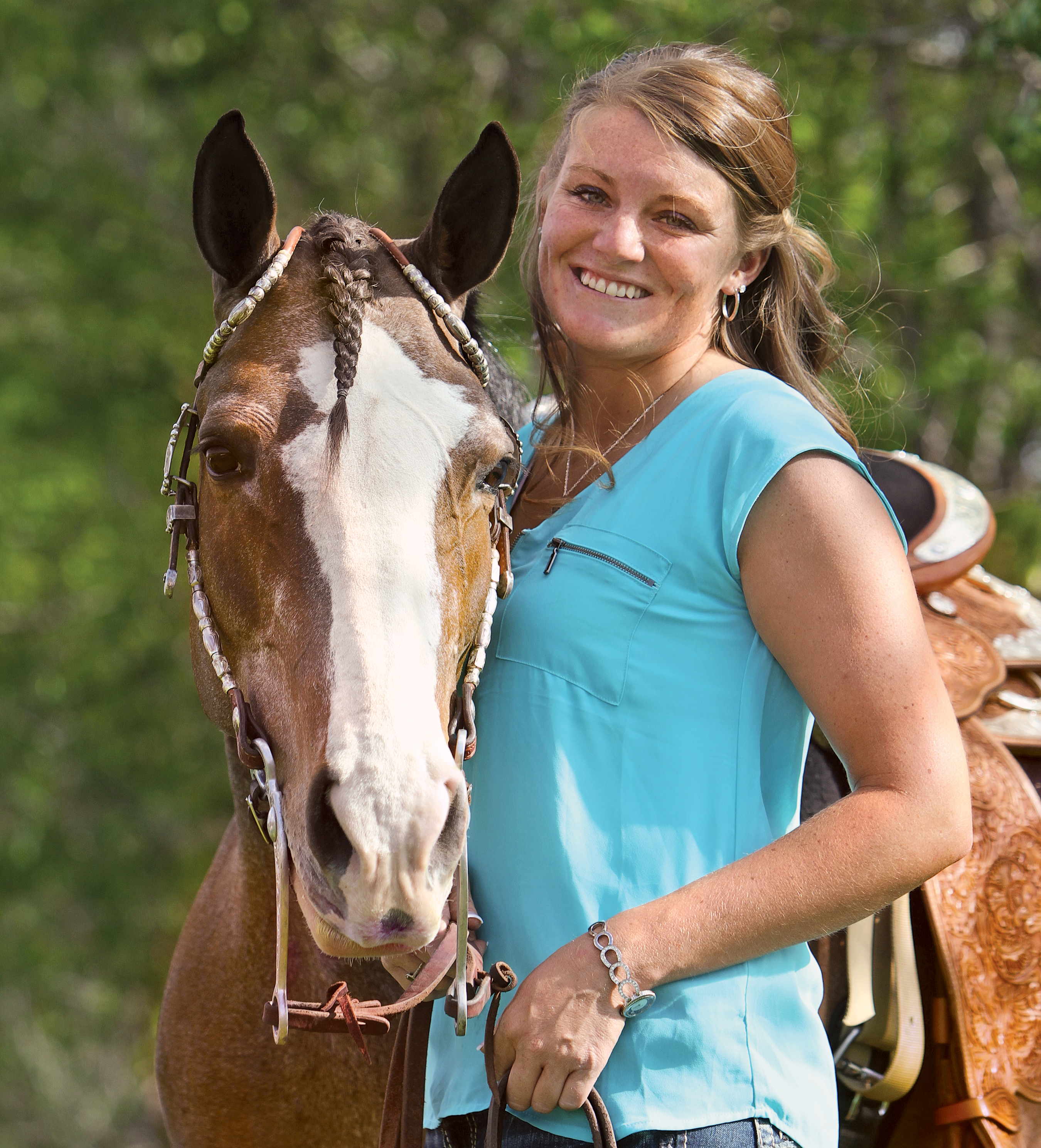
Much higher.
This is our improbable story.
[Green horse, green rider? Here are tips to make it work.]
Saddie the Spook
The filly’s name was “Windy” when we bought her in 1995. Shirley, the woman who sold her to us, had been boarding her at our place. Windy “ran like the wind,” Shirley explained, noting that the puny little thing—only about 13 hands tall—had been chased with a whip by one of her four prior owners, who thought it good fun to make her race about. My mother paid $350 for her, working it off in trade by babysitting Shirley’s two young girls.
My mother paid $350 for her, working it off in trade by babysitting Shirley’s two young girls.
My mom and dad, both city-bred, wanted a more rural life for their daughters. They’d bought a house on an acre of land in Rock Springs, Wyoming, and eventually all four of us girls would have horses of our own.
Mom renamed my filly Singin Saddie Sue (“Saddie” is pronounced “Sadie”) because of the musical neigh she produced every time she caught sight of me. This was after our trust bond had begun to develop, however. Before then, Saddie was quite a spook.
When she first began boarding with us, she was terrified of everything, especially men—who, as far as she knew, might be carrying whips. Skittish and wary, she had to wear a halter with a short lead hanging from it for anyone to catch her.
She was a wild little thing.
[Three proven ways to de-spook your horse.]
Basics—the 4-H Way
Once she became mine, my mom, to her credit, knew I needed help learning how to handle her. Amber, the woman my mom paid to come once a week, taught my sisters and me the basics of safety, care, and handling, all of it the 4-H way.
We learned how to approach a nervous young horse. We learned how to halter and lead, and how to tie (much shorter than you tie a dog, we discovered). We also learned what each grooming tool was, and how to use it properly.
My older sister got her Arabian yearling two weeks after I got Saddie, and we spent every spare moment with those horses, cultivating their trust. Grooming relaxed them, so we spent hours brushing them all through that cold Wyoming winter, often risking frostbitten fingers.
We would pore over copies of Horse&Rider, admiring the spit-polished horses in spotless show gear and telling ourselves that someday, that will be us!
I insisted on doing whatever I could myself, including longeing, once Amber taught us how. In the beginning, I’d dig my heels in while Saddie tried to drag me around. My mom laughed and called it “dirt skiing.”
[Develop your groundwork skills with ‘Round Pen 101.‘]
Eventually Saddie learned to longe properly and we moved on to tacking her up and longeing her with the saddle on. Then Amber taught my sister and me how to ground-drive, including all the basics of go, whoa, and turning left and right. For three months we did nothing but groundwork, then Amber said it was time for Saddie’s first ride.
I was ecstatic. It was cold that day and I had a touch of the flu, but nothing could keep me out of that saddle. Up I went, onto my filly’s back. Her legs splayed and she pinned her ears, but other than that she was calm and willing.
All our prep work had paid off.
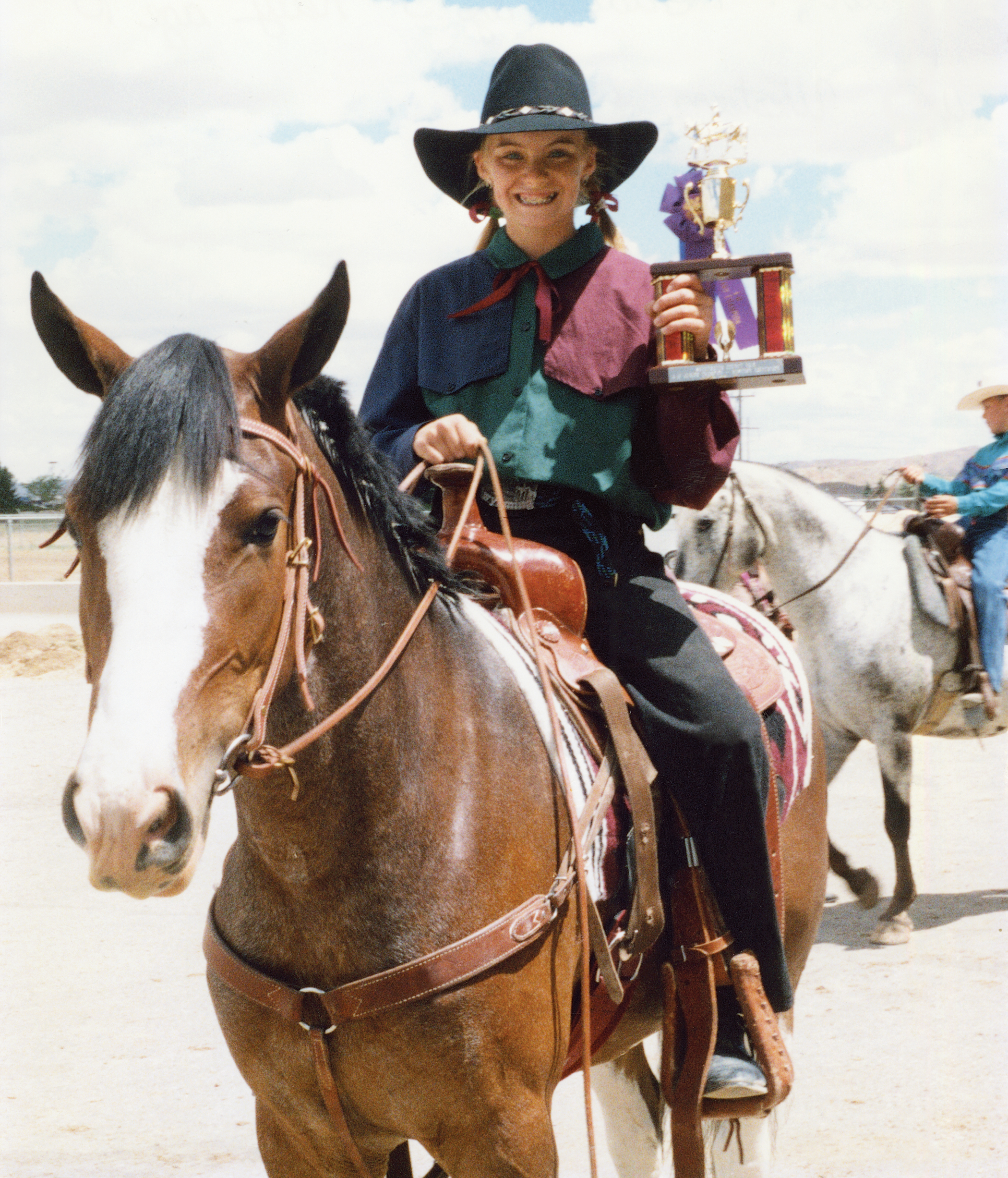
‘How Do They Do That?’
We continued her training all winter and through the next spring, and by May of 1996, when Saddie was 2, we were ready for our first small 4-H show. I had high hopes for the walk/trot Western pleasure class, and though Saddie was well behaved throughout it, we placed…dead last!
After the show, my mom, sisters, and I were perplexed. We couldn’t understand how riders were getting their horses to respond with no obvious leg movements, when we had to “butterfly” ours.
So began our riding lessons with Maryann. She taught us to use subtle rein and leg cues, to transition between gaits with finesse, and to pick up our leads cleanly at the lope.
To pay for those lessons, we cleaned her stalls—all 15 of them—and I did some housecleaning as well. To earn money for our horses’ hay, my sisters and I also raised and auctioned off 4-H hogs.
The next year, at our county fair’s 4-H show, Saddie and I entered a junior Western equitation class. In a plain Western shirt and with pigtails bouncing below my poorly shaped hat, I sat up straight and rode my horse proudly. Our pattern was correct, our rail work good.
Standing in the center of the ring, awaiting the placings, I thought how awesome it would be to make the top five.
And then…“First place goes to Kelly Lear, riding Singin Saddie Sue.” I gasped—surely they’d made a mistake! I loped Saddie over to claim our trophy, then scooted out of the arena as quickly as I could, before they could change their minds.
[How to get started in a 4-H Horse Project.]
Saddie the Swan
That trophy, earned when I was just 10 years old, lit a fire in me that’s never gone out. From that point onward, I continued to work hard and consistently with Saddie to improve our skills and become an even better team. In my mind, we could do anything.
We continued to place well in local competitions and at the county fair. In 1999 we qualified for the Wyoming State Fair Horse Show for the first time, winding up winning the overall 4-H state reserve championship in intermediate showmanship.
The following year, we achieved a goal I’d had from the beginning: winning an overall 4-H state championship, in senior programmed ride. We also took home another reserve championship, in senior showmanship.
By this time, my ugly-duckling filly had matured into a handsome, well-muscled swan, just under 15 hands tall. We continued to compete at the Wyoming State Fair until I aged out of 4-H, in 2005. By then, we’d claimed eight state 4-H championships, two reserve championships, and multiple 4-H all-around high-points and individual class high-points.
I figured we’d gone about as far as you could go with a grade horse.
But then, in the summer of the following year, I learned something that rekindled the fire within. Saddie had always had enough white, mostly on her legs, to look like a Pinto, even though she was unregistered. That summer, I learned her white markings made her eligible for registry with the Pinto Horse Association of America, even if we didn’t know who her sire and dam were.
A new door was opening!
[Tips to get you and your horse into the show pen and winning.]
‘We Don’t Belong Here!’
With my mare registered, I set our next goal: to compete in the 2007 Pinto World Championship Show in June of the following year. It would be a challenge, for sure, but I had no doubt whatsoever that we were up to it.
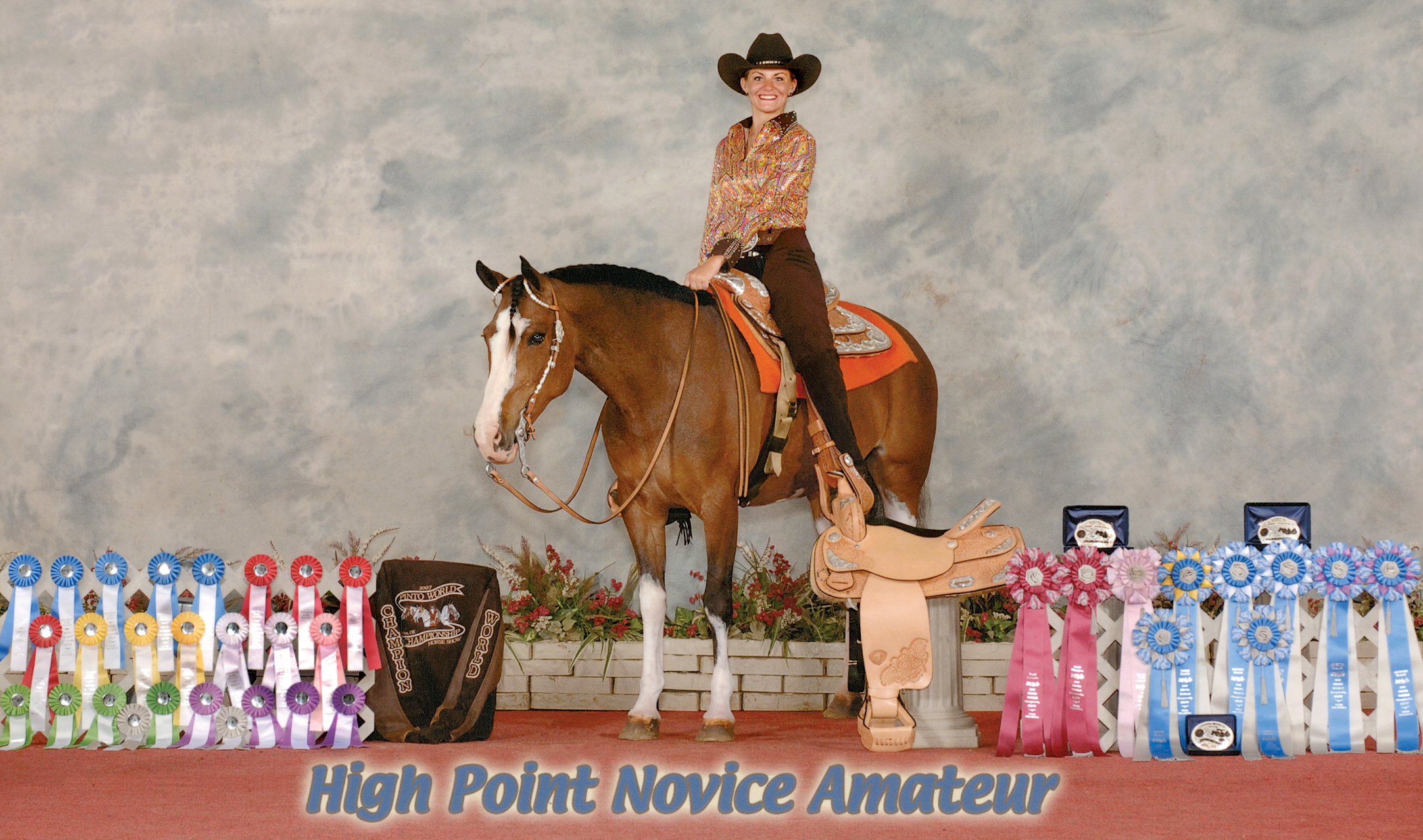
I took Saddie with me when I entered my freshman year at Western Wyoming Community College in the fall of 2006. We continued to work diligently, practicing our events.
I also waited tables at the local Applebee’s Neighborhood Grill and Bar to earn the money I’d need to compete at the show.
As busy as I was, the time flew by. Before I knew it, we were making the 17-hour drive to Tulsa, Oklahoma, for the 2007 Pinto World Championship Show. When my mom, my sister, and I finally pulled into the parking area at the Ford Expo Center with Saddie in tow, the scale of it all was more than a little intimidating.
A short time later, after Saddie was settled in, I walked past the stall of a gorgeous, 16.3-hand tobiano gelding and thought, we don’t belong here. These were bigtime horses with bigtime trainers. We were a family from a small town in Wyoming with a pedigree-less mare that was just 14.3 hands tall—how could we compete?
But it was too late to back out now, so I just hoped it would be a great learning experience.
That was always my reassuring fallback position.
[This DIY rider has built a successful non-pro reining career.]
Just Make the Call-Back
I set the most reasonable goal I could: one top-10 finish. That helped me focus on the day we prepared to enter our novice amateur Western showmanship class.
Showmanship had always been a favorite event of mine, and Saddie and I had practiced it a lot and competed in many 4-H showmanship classes.
In fact, my smart girl had over the years learned to set herself up! Before I could turn and ask her to square her legs, she’d have already done it. And, on that day, she performed true to form, producing a seamless pattern.
Still, when I heard the announcer calling our number back for the finals, it seemed unreal to me.

The finals pattern in showmanship is always tougher. I studied it intently, then visualized Saddie and me doing it perfectly.
And she didn’t disappoint me, gliding through the pattern and setting herself up as usual. Yet, once again, when I heard the announcer’s call, it seemed as if it were all a dream—and this time I couldn’t stop the tears.
“Your 2007 Pinto World Champion is Kelly Lear showing her horse Singin Saddie Sue!”
Now I had concrete proof that anything in the world was possible. My hopes for our novice amateur horsemanship class that same day were already high, because Saddie is what I call a Pattern Queen. Get her to a cone and ask her for something, and she’ll nail it. There’s no hesitation, head-raising, or tail-wringing. She seems to love the challenge.
Sure enough, she aced that pattern, too, making the call-back…and then winning the class.
We also earned a reserve championship in novice amateur Western pleasure, plus four more top-five finishes and four more top-10s at that 14-day show.
Incredibly, by the show’s end, we were the all-around novice amateur world champions.
This was more than a dream come true; it was a fairytale come true. A dinky, fearful filly had transformed into a beautiful, confident show horse. Along the way, I’d grown into an experienced competitor who knew firsthand that hard, consistent work really does pay off.
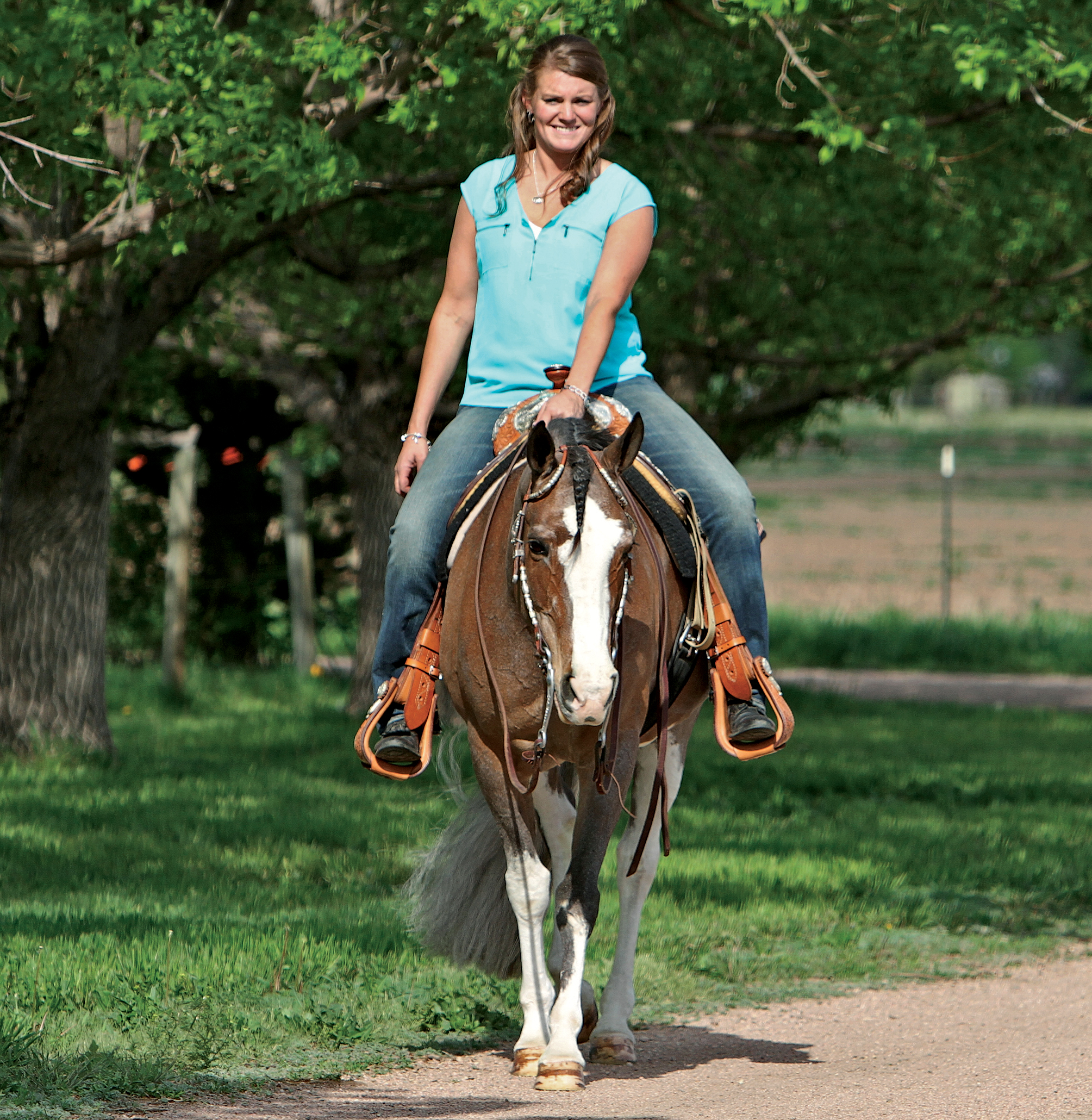
Life Lessons
Today, at 20, Saddie is still my loyal partner. As I finished this story, we were preparing to leave for the 2014 Pinto World Championship Show. We’ve won so much over the years (see “Lifetime Wins,” above), but it’s not about the ribbons as much as it is about the journey together, and the connection we’ve forged.
[Related: ‘Watching my senior horse age is breaking my heart.’]
Saddie still greets me with a neigh, and she’ll “kiss” me on command. A different trick I taught her back when we both were young now drives me crazy: saying “please” by pawing. (Yeah, I know. Bad idea.) I can hardly blame her for it, though. She’s just doing what she always does—trying to please.
I’ve bred Saddie three times and am excited about her latest foal, which I’m sure will follow in her mama’s competent footsteps. And, it’s my love for this extraordinary mare (plus the support and encouragement of my wonderful parents) that inspired me to become a veterinarian—I finished my senior year at Colorado State University in May.
That was a difficult program. Fortunately, my experience with Saddie had already taught me how to manage long hours, hard work, and determination—in order to make a dream come true.


